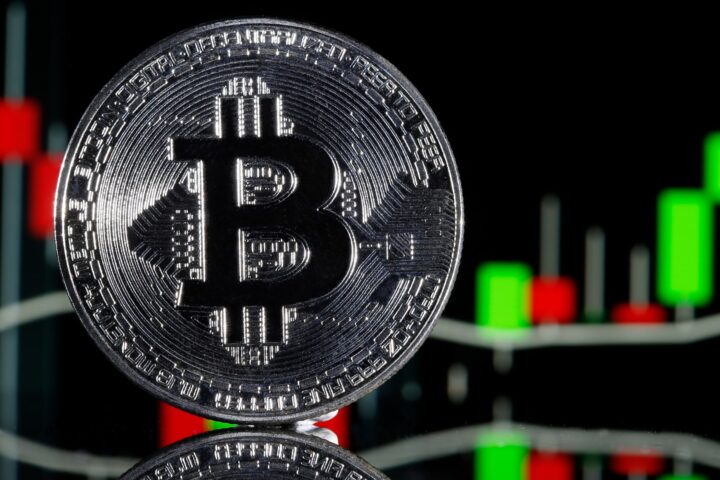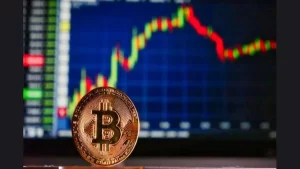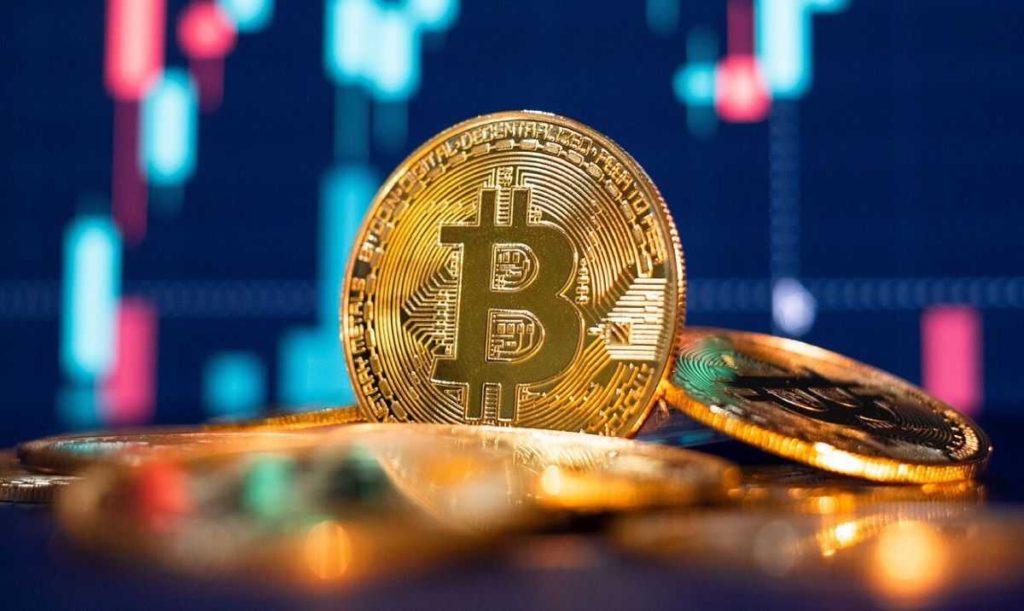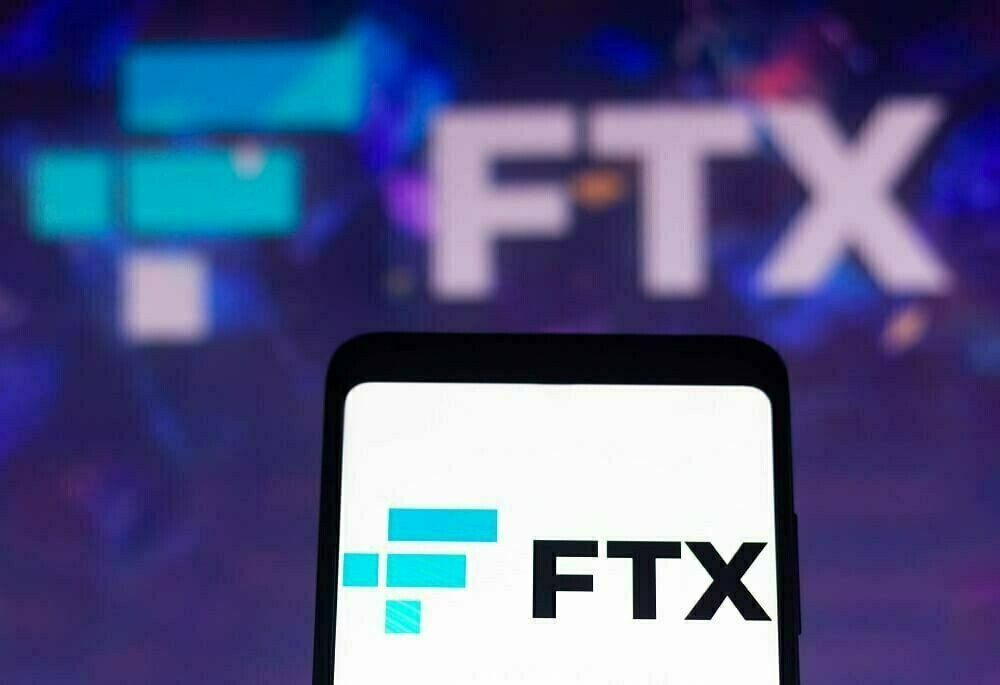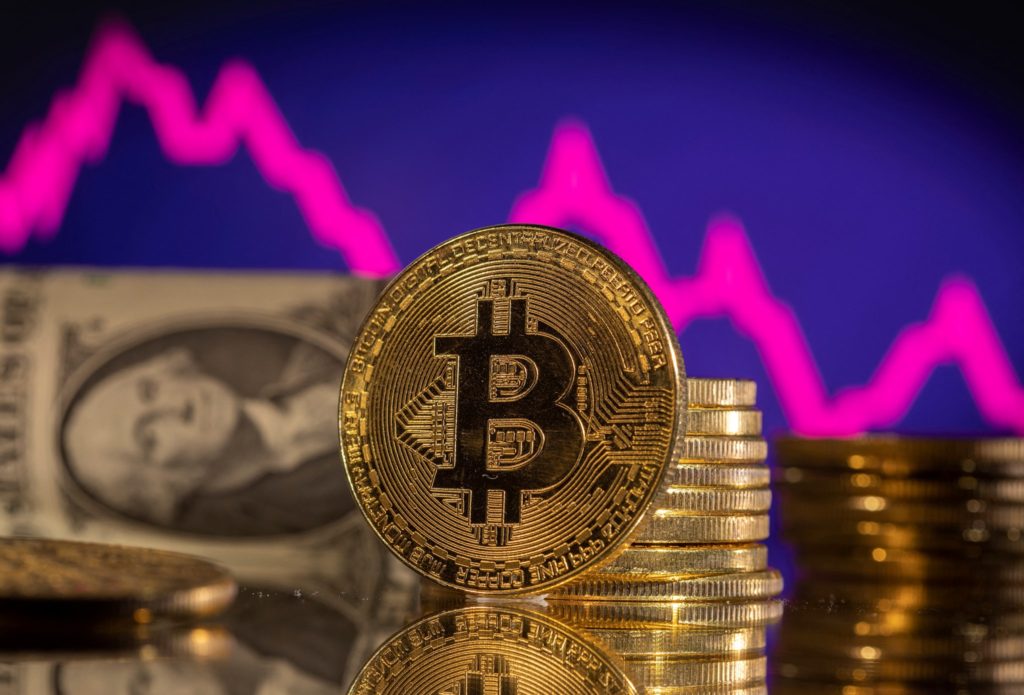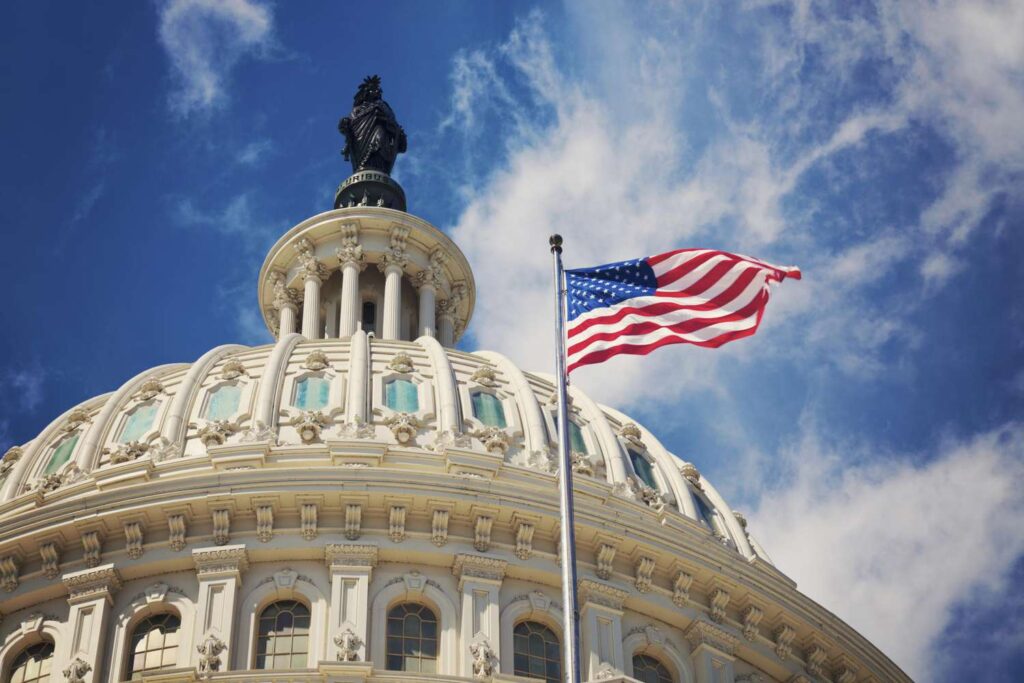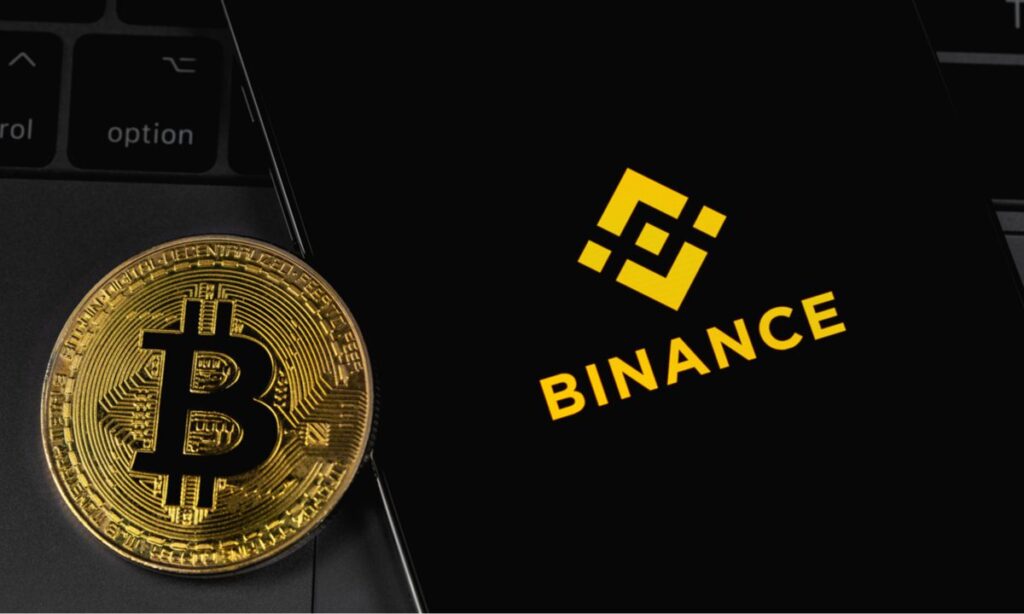On September 20, Bitcoin stood firm at $27,000 as the cryptocurrency world awaited a critical macroeconomic event.
Cointelegraph Markets Pro and TradingView data indicated a shift in focus towards higher BTC prices compared to the previous week.
The crypto markets demonstrated confidence in the upcoming decision regarding interest rates by the United States Federal Reserve.
The Federal Open Market Committee (FOMC) was scheduled to announce its latest changes at 2 pm Eastern Time on that very day.
As of the report, the consensus was overwhelmingly in favor of the rates remaining unchanged, with a 99% probability according to CME Group’s FedWatch Tool.
Financial commentator Tedtalksmacro noted that core CPI inflation was aligning with the Fed’s target, suggesting a potential acknowledgment by the Fed that inflation was trending as desired.
However, the event was expected to bring about short-term market volatility.
Analyzing the BTC/USD order book on Binance, Material Indicators highlighted thin liquidity around the spot price, indicating potential for increased volatility.
They also anticipated that the speech and press conference by Fed Chair Jerome Powell would further impact Bitcoin’s price.
Looking at the order book, there were bid-side liquidity levels around $26,650, with substantial bids at $25,000.
On the upside, sellers were positioned at $27,450, which marked the local BTC price high for September.
READ MORE: Blockchain Betting: The New Way to Invest in Digital Assets
Traders had their eyes on key levels and expected the FOMC’s decision to trigger various reactions in the market.
Some traders foresaw challenges to range levels as part of the FOMC’s impact.
Popular trader Daan Crypto Trades anticipated that stop-loss orders might be triggered during the volatility.
Others, like trader Jelle, predicted “choppy waters” for Bitcoin. Trader Skew also anticipated an active trading environment following the FOMC announcement.
Crypto Tony emphasized the importance of the $26,800 support zone for Bitcoin bulls. He noted that maintaining this level was crucial for his long position, highlighting the potential risk of creating a deviation below it.
In conclusion, Bitcoin remained stable at $27,000 on September 20, with the crypto community eagerly awaiting the outcome of the FOMC’s interest rate decision, which was expected to have short-term effects on market volatility and key price levels.
Other Stories:
Dubai-Based Cryptocurrency Exchange Faces Liquidity Crisis Amid Regulatory Scrutiny
DeFi Ecosystem Faces Challenges as On-Chain Activity Declines and Stablecoins Feel the Pressure
Cryptocurrency Market Sees Bullish Momentum Amidst Bitcoin’s Recovery
Stanford University, headquartered in California, has announced its intention to refund all funds it had received from the now-defunct cryptocurrency exchange FTX, as reported by Bloomberg.
The university disclosed that it had received a sum of $5.5 million in donations from various FTX-associated entities between November 2021 and May 2022.
In a statement released via email on September 19th, a spokesperson from Stanford revealed their plan, stating, “We have been in discussions with attorneys for the FTX debtors to recover these gifts and we will be returning the funds in their entirety.”
Stanford clarified that the donations it had received were primarily intended for pandemic-related prevention and research purposes and had been given by the FTX Foundation and FTX-related companies.
Interestingly, the parents of Sam “SBF” Bankman-Fried, the former CEO of FTX, both have affiliations with Stanford Law School and are legal scholars. This connection adds an intriguing layer to the story.
Stanford’s decision to sever financial ties with FTX comes in the wake of allegations against SBF’s parents, Alan Bankman and Barbara Fried, who are accused of embezzling millions from the cryptocurrency exchange.
READ MORE: Dubai-Based Cryptocurrency Exchange Faces Liquidity Crisis Amid Regulatory Scrutiny
The FTX debtors initiated a lawsuit on September 18th, alleging that the duo had inappropriately diverted funds from their involvement with the exchange for personal enrichment, totaling millions of dollars.
The court documents reveal that Bankman had concerns about his annual salary, which was set at $200,000, and these concerns went unaddressed by SBF or FTX US. Bankman had reportedly expected an annual salary of $1 million.
On September 19th, SBF’s legal team sought his early release from jail to prepare for his upcoming trial scheduled for October.
During the hearing, one of the judges pointed out that SBF’s arguments about his First Amendment rights were no longer relevant due to his alleged attempts to intimidate a witness, Caroline Ellison, who is the former CEO of Alameda Research.
In sum, Stanford University’s decision to return the funds it received from FTX-related entities is an interesting development amidst the legal troubles facing SBF’s parents and the ongoing investigations into FTX’s financial dealings.
Other Stories:
Cryptocurrency Market Sees Bullish Momentum Amidst Bitcoin’s Recovery
Blockchain Betting: The New Way to Invest in Digital Assets
DeFi Ecosystem Faces Challenges as On-Chain Activity Declines and Stablecoins Feel the Pressure
Hong Kong regulators are intensifying their scrutiny of the cryptocurrency market following the arrest of six individuals in connection with an alleged fraud case centered around an unlicensed crypto exchange known as JPEX.
On September 19th, Hong Kong Chief Executive John Lee Ka-Chiu addressed the media, emphasizing the government’s commitment to bolstering investor awareness.
He urged investors to exclusively utilize platforms authorized by the Securities and Futures Commission (SFC), as reported by the Associated Press.
The JPEX controversy first came to light on September 13th when the SFC alerted the public to more than 1,000 complaints regarding the unregistered crypto exchange.
These complaints alleged losses exceeding 1 billion Hong Kong dollars, equivalent to $128 million.
In its official warning, the SFC pointed out that JPEX had aggressively marketed its services and products to the Hong Kong public, leveraging online celebrities and over-the-counter money changers for promotion.
READ MORE: NFL Quarterback Trevor Lawrence and YouTube Influencers Settle FTX Lawsuit
As the problems surrounding JPEX gained public attention, numerous platform users found themselves unable to withdraw their funds, while others lamented reductions in their wallet balances.
In response to the regulatory warning, JPEX reportedly raised its withdrawal fee to an exorbitant $1,000 in a bid to dissuade users from liquidating their assets.
Subsequently, the crypto exchange attributed the ongoing liquidity crisis to third-party market makers.
Hong Kong police also apprehended influencer Joseph Lam, also known as Lin Zuo, in connection with JPEX.
Hong Kong had positioned itself as a burgeoning crypto hub in 2023, fostering a pro-crypto regulatory environment and facilitating access to the crypto trading market for retail investors.
However, unlicensed platforms like JPEX exploited the lack of knowledge and awareness among many users in the country.
In response, the regulatory authority has embarked on an educational campaign, aiming to enlighten individuals about the importance of exclusively engaging with licensed platforms for their cryptocurrency trading activities.
This proactive stance underscores Hong Kong’s commitment to fostering a safe and transparent crypto ecosystem, protecting investors, and maintaining its position as a reputable global financial center.
Other Stories:
Magic Eden Unveils Solana’s cNFT Support
FTX Reopens Secure Customer Claims Portal Following Cyberattack
Bitcoin Stabilizes at $26,500 After Hitting September Highs: Eyes on Federal Reserve’s FOMC Meeting
Hong Kong-based cryptocurrency exchange, CoinEx, recently disclosed that compromised private keys led to a significant theft of tokens totaling more than $70 million.
Despite this substantial loss, the exchange has reassured its users that the stolen amount represents only a small portion of its overall assets under management.
CoinEx has pledged to fully compensate affected users for their lost funds as it actively works to recover and enhance platform functionality.
The exchange is diligently investigating the security breach, with several blockchain security firms attributing the incident to North Korean Lazarus Group hackers.
CoinEx has taken the unusual step of initiating direct communication with the hackers in an effort to reach a mutually agreeable resolution.
Preliminary findings from the investigation point to a compromised private key for the exchange’s hot wallets, which are used to store assets for deposits and withdrawals.
To mitigate further losses, CoinEx suspended its withdrawal service, patched system vulnerabilities, and transferred remaining assets from the compromised hot wallets.
READ MORE: Magic Eden Unveils Solana’s cNFT Support
The exchange anticipates gradually resuming withdrawals within seven business days.
In response to the breach, CoinEx has prioritized the development and deployment of an entirely new and robust wallet system capable of handling activities across its extensive portfolio of 211 chains and 737 assets.
The incident began when CoinEx initially noticed “anomalous withdrawals” from one of its hot wallets on September 12, starting with a transfer of 4,947 ETH.
Subsequently, the hackers executed significant withdrawals of other tokens to the same address. Initially estimated at $27 million, the value of the stolen funds has since doubled in the week following the breach.
North Korean hackers have been a persistent threat to the cryptocurrency space in recent years, orchestrating some of the largest thefts in the industry’s history.
In 2022, they masterminded the Axie Infinity Ronin Bridge hack, resulting in the theft of over $650 million.
Chainalysis, a blockchain analytics firm, estimates that North Korean hackers have already stolen approximately $340 million in cryptocurrency in 2023.
This figure is expected to rise with the addition of the CoinEx hack and a $41 million hack of the cryptocurrency gambling platform Stake on September 4.
Other Stories:
NFL Quarterback Trevor Lawrence and YouTube Influencers Settle FTX Lawsuit
Bitcoin Stabilizes at $26,500 After Hitting September Highs: Eyes on Federal Reserve’s FOMC Meeting
FTX Reopens Secure Customer Claims Portal Following Cyberattack
Recent on-chain data reveals a compelling narrative in the world of Bitcoin (BTC) as holders continue to accumulate the digital asset. The statistics depict a scenario where exchange holdings have plummeted to yearly lows, while the proportion of dormant BTC supply has surged to unprecedented levels.
Glassnode’s Bitcoin supply last active chart highlights this trend, showcasing that the amount of inactive BTC, untouched in addresses for one, three, and even five years, has reached historic highs since July 2023.
These findings resonate with Bitcoin analytics from CoinMarketCap, which tracks wallet addresses based on the duration of BTC holding. Remarkably, a staggering 69% of addresses, equivalent to 36.8 million, have maintained their BTC holdings for over a year.
CryptoQuant’s data further reinforces this trend by indicating a consistent decline in Bitcoin outflows from exchanges since July 2021.
Currently, a meager 2 million BTC remains on various exchanges, reflecting a substantial decrease over time.
For a more granular view, the CoinGlass Bitcoin on exchanges tracker dissects the circulating BTC holdings among major centralized exchanges.
Leading the pack is Binance, boasting 543,281 BTC on its platform. However, it’s worth noting that Binance has experienced a notable exodus of Bitcoin in the past month, with 21,645 BTC withdrawn.
Coinbase Pro secures the second position with a BTC balance of 435,530.
READ MORE: Cryptocurrency Market Sees Bullish Momentum Amidst Bitcoin’s Recovery
Similar to Binance, this U.S.-based exchange has witnessed 3,612 BTC being withdrawn over the last 30 days.
Interestingly, OKX stands out as the only exchange in the top 10 to have observed a substantial inflow of Bitcoin in the same period, with 4,630 BTC flowing onto its platform.
The broader context of these developments involves market commentators and analysts making bullish predictions about Bitcoin’s potential value.
These sentiments are fueled by the anticipation of the highly-awaited mining reward halving, scheduled for 2024.
As Bitcoin holders increasingly opt to store their assets securely in non-exchange wallets, the crypto community is left to speculate on the potential for further price appreciation in the coming years.
These accumulating patterns suggest a strong belief in Bitcoin’s long-term value and utility as a digital store of wealth.
Other Stories:
Dubai-Based Cryptocurrency Exchange Faces Liquidity Crisis Amid Regulatory Scrutiny
DeFi Ecosystem Faces Challenges as On-Chain Activity Declines and Stablecoins Feel the Pressure
The United States House Financial Services Committee is taking significant steps to address the issue of central bank digital currencies (CBDCs).
Chairman Patrick McHenry has announced that the committee will hold markups for two bills related to a potential digital dollar on September 20.
Markups serve as essential sessions where lawmakers thoroughly discuss the specifics of a proposed bill before it progresses to the House floor.
One of the key bills under consideration is the Digital Dollar Pilot Prevention Act, known as H.R. 3712.
This legislation, introduced by Representative Alex Mooney in May, seeks to restrict the Federal Reserve from launching pilot programs to test CBDCs without prior approval from Congress.
This move is aimed at ensuring that any steps towards a CBDC are subject to proper oversight and authorization.
Although the Federal Reserve has recently asserted that it has not made any concrete decisions regarding the issuance of a CBDC, it clarified that any such move would require authorization through legislation.
Interestingly, the Federal Reserve of San Francisco has been actively recruiting technical personnel for a CBDC project in recent months, suggesting that the digital dollar remains a topic of serious consideration.
The second piece of legislation being discussed is an amendment to the Federal Reserve Act, which carries multiple provisions.
READ MORE: DeFi Advocacy and Market Dynamics: A Week of Intense Developments in Decentralized Finance
It prohibits Federal Reserve banks from directly offering certain products or services to individuals. Additionally, it bars the use of CBDCs for monetary policy purposes and other similar objectives.
The bill explicitly states that “a Federal reserve bank shall not offer a central bank digital currency, or any digital asset that is substantially similar under any other name or label, indirectly to an individual through a financial institution or other intermediary.”
The issue of a digital dollar has sparked considerable debate within the United States.
Prominent figures like presidential candidates Robert F. Kennedy Jr. and Ron DeSantis have voiced their concerns, particularly regarding financial privacy, in opposition to the establishment of a CBDC in the country.
Meanwhile, proponents of CBDCs argue that such a digital currency would help maintain the global relevance of the U.S. dollar and potentially facilitate increased adoption of cryptocurrencies.
As the debate continues, the House Financial Services Committee’s actions represent a pivotal moment in shaping the future of digital currency in the United States.
Other Stories:
BitQuant Predicts Bitcoin Will Hit $250,000 After Halving
Bitcoin Miner Returns $500,000 in Fees to Paxos After Transaction Mistake
In September, Binance.US, the American arm of the global cryptocurrency exchange Binance, grappled with a series of challenges that sent its trading activity plummeting to historic lows.
On September 16th, Binance.US reported a mere $5.09 million in trading volume, as disclosed by Amberdata on The TIE Terminal.
The lowest point of the month was recorded on September 9th when trading activity dipped to a paltry $2.97 million.
This stark decline is a stark contrast to September 17, 2022, when the exchange’s trading volume comfortably hovered around $230 million.
The turmoil surrounding Binance.US can be traced back to a lawsuit filed by the Securities and Exchange Commission (SEC) on June 5. The SEC accused both Binance and Binance.US of various infractions, including unregistered securities offerings and wash trading.
The allegations included Binance.US’s failure to register as a broker-dealer and to properly register its staking-as-a-service program.
In response to the lawsuit, Binance.US took the drastic step of suspending trading for more than 100 token pairs.
This move had a substantial impact on the exchange’s overall trading activity.
Internal challenges have further compounded the situation. Brian Shorder, the former CEO of Binance.US, resigned recently, joining a growing list of global executives who have departed the organization in recent weeks.
READ MORE: BitQuant Predicts Bitcoin Will Hit $250,000 After Halving
Following Shorder’s departure, Head of Legal Krishna Juvvadi and Chief Risk Officer Sidney Majalya also announced their resignations.
Speculation is rife that these departures are linked to an ongoing investigation by the U.S. Department of Justice into Binance, its CEO Changpeng “CZ” Zhao, and Binance.US. CZ, in a statement on X (formerly Twitter), indicated that Shorder’s exit was due to a “deserved break” and praised his contributions to the company.
The troubles for Binance.US appear to be far from over.
The SEC has accused the exchange of non-cooperation in the ongoing investigation, citing a meager production of 220 documents during the discovery process.
Additionally, a judge granted the SEC’s request to unseal previously sealed or redacted documents related to the case on September 15.
These documents are expected to shed further light on the ongoing legal challenges faced by Binance.US and are anticipated to become publicly available in the near future.
Other Stories:
DeFi Advocacy and Market Dynamics: A Week of Intense Developments in Decentralized Finance
Bitcoin Miner Returns $500,000 in Fees to Paxos After Transaction Mistake
James Tromans, Google Cloud’s Web3 lead, has raised a crucial point about the cryptocurrency industry’s excessive fixation on token prices at the expense of exploring the practical applications of smart contracts in real-world business scenarios.
In a recent interview with Cointelegraph, Tromans emphasized the importance of shifting the focus from token dynamics to the actual business logic embedded within smart contracts.
Tromans highlighted the need to identify and address specific business challenges that smart contracts can resolve.
He asserted that tokens should be seen as tools to execute business logic, rather than the central focus of Web3 technology.
He stated, “It’s the business problem that’s the thing, not the token.” Tromans urged the industry to move beyond discussions of tokens and speculative trading, as they do not constitute the essence of Web3.
Google Cloud plays a significant role in the blockchain space through its Blockchain Node Engine, providing users with self-hosted nodes for accessing blockchain data, conducting transactions, developing smart contracts, and running decentralized applications.
Tromans emphasized that blockchain and smart contracts can drive innovation, reduce operational costs, and create new revenue streams.
Despite the crypto bear market, Google Cloud has experienced robust demand from enterprises seeking to integrate blockchain technology into their operations.
Tromans noted that traditional enterprises continue to express interest in leveraging blockchain to enhance efficiency, reduce costs, and accelerate innovation.
Most of this demand stems from the traditional finance (TradFi) sector, where blockchain technology is employed to address fundamental financial and accounting challenges.
READ MORE: DeFi Advocacy and Market Dynamics: A Week of Intense Developments in Decentralized Finance
Additionally, Google Cloud customers are increasingly exploring blockchain solutions for digital identity and supply chain management.
Digital identity has garnered significant attention in the Web3 space, with the recent launch of Worldcoin, a biometric cryptocurrency project founded by OpenAI CEO Sam Altman in 2019.
However, Tromans cautioned that blockchain technology may not achieve mass adoption until the user experience improves.
He argued that complex concepts like private keys must be abstracted away to make blockchain technology accessible to non-technical users.
Tromans drew parallels with everyday technology like web browsers, highlighting the need for similar user-friendly interfaces in Web3.
He emphasized the importance of building frictionless solutions for key recovery and data management to enhance the overall user experience.
Ultimately, Tromans envisioned a future where blockchain technology seamlessly addresses challenges in various industries, including payments, gaming, and the arts, without users needing to understand the underlying technology.
He concluded that once Web3 achieves mass adoption, it will become synonymous with the web itself, transcending its current distinct identity.
Other Stories:
BitQuant Predicts Bitcoin Will Hit $250,000 After Halving
Bitcoin Miner Returns $500,000 in Fees to Paxos After Transaction Mistake
Dubai-based cryptocurrency exchange, JPEX, has found itself entangled in a liquidity crisis, prompting a series of actions that have stirred controversy within the cryptocurrency community.
In a blog post on September 17, JPEX attributed this crisis to what it termed as “unfair treatment” by certain institutions in Hong Kong, compounded by negative news coverage.
The exchange claimed that these factors led to its third-party market makers freezing funds and demanding additional information for negotiation, thus restricting liquidity and increasing operational costs to unsustainable levels.
In response to this predicament, JPEX announced the delisting of all operations affiliated with its Earn product, effective September 18.
This decision prevents users from initiating new Earn orders, allowing only existing orders to continue until their respective product end dates.
While regular spot trading activities remain unaffected for now, reports have emerged that JPEX is imposing a hefty 999 Tether withdrawal fee, capped at 1,000 USDT, further unsettling its user base.
JPEX, however, did not provide a direct explanation for the high withdrawal fee but assured users that it plans to gradually restore normal withdrawal fee levels once negotiations with third-party market makers conclude.
The exchange stated its commitment to reclaiming liquidity from these market makers and promised to share the revised withdrawal fee details after these negotiations.
READ MORE: BitQuant Predicts Bitcoin Will Hit $250,000 After Halving
Additionally, JPEX revealed plans to utilize a decentralized autonomous organization (DAO) to gather suggestions from users on its restructuring efforts.
This move reflects the exchange’s desire to engage its community in reshaping its future direction.
Despite these announcements, JPEX has faced scrutiny from regulators.
On September 13, the Hong Kong Securities and Futures Commission (SFC) issued a warning against JPEX for allegedly marketing its services to Hong Kong residents without obtaining the necessary license.
The SFC highlighted various irregularities in JPEX’s practices, including offering exceptionally high returns and other discrepancies in its marketing strategies.
Concerns deepened as an attendee at the Token 2049 conference in Singapore reported that the JPEX booth had been abandoned shortly after the SFC’s warning was issued.
Subsequently, local authorities in Hong Kong received numerous complaints about the exchange, further intensifying the regulatory scrutiny surrounding JPEX’s operations.
As this situation unfolds, the cryptocurrency community and regulatory bodies continue to closely monitor developments with JPEX, with both sides eager to see how the exchange addresses its liquidity crisis and regulatory issues.
Other Stories:
Bitcoin Miner Returns $500,000 in Fees to Paxos After Transaction Mistake
DeFi Advocacy and Market Dynamics: A Week of Intense Developments in Decentralized Finance
Bitcoin has shown signs of a positive turnaround as it formed successive Doji candlestick patterns on the weekly chart over the last three weeks.
This indicates a resolution of the uncertainty between the bulls and bears in favor of the bulls.
However, the upcoming Federal Open Market Committee meeting on September 20 could introduce volatility, depending on the outcome of Fed Chair Jerome Powell’s press conference following the rate decision.
Most market participants anticipate the Federal Reserve to maintain the current interest rate levels.
Bitcoin’s recovery from strong support near $24,800 has sparked interest in select altcoins, which present trading opportunities.
For these altcoins to sustain their upward trajectory, Bitcoin must remain above $26,500.
Bitcoin has recently surpassed the 20-day exponential moving average ($26,303), indicating a reduction in selling pressure.
The bulls have successfully defended against several bearish attempts to push the price below the 20-day EMA.
If buyers manage to push the BTC/USDT pair past the 50-day simple moving average ($27,295), it may reach $28,143, though this level is expected to face resistance from bears.
Conversely, if the price drops below the 20-day EMA, it could retest the pivotal support at $24,800.
Similarly, altcoins like MKR and AAVE have displayed bullish signs, with MKR above the 50-day SMA ($1,162) and AAVE surging past moving averages on September 16.
MKR/USDT could head towards $1,370, though the level may witness a battle between bulls and bears.
Conversely, if the 20-day EMA ($1,162) is breached, the pair might consolidate within the range of $980 to $1,370.
READ MORE: Bitcoin Miner Returns $500,000 in Fees to Paxos After Transaction Mistake
As for AAVE/USDT, a sustained price above the 50-day SMA ($59) could drive it towards $70 and $76, but a drop below the 20-day EMA ($56) could lead to a decline to the solid support at $48.
THORChain’s RUNE has made a smart recovery, nearing the resistance at $2.
If it breaks through, it may initiate a new uptrend to $2.30 and eventually $2.80.
However, a sharp downturn from $2 could push the price down to the 20-day EMA ($1.62).
Lastly, RNDR broke out and closed above the 50-day SMA ($1.58), suggesting reduced selling pressure.
The moving averages are on the verge of a bullish crossover, and a bounce from the 20-day EMA ($1.50) could lead to a stronger recovery to $1.83 and $2.20.
On the contrary, a drop below the moving averages could send RNDR/USDT down to $1.38 and later to $1.29.
In summary, these cryptocurrencies show promising signs, but their paths forward depend on key support and resistance levels, as well as broader market factors like the Federal Reserve’s decisions.
Other Stories:
BitQuant Predicts Bitcoin Will Hit $250,000 After Halving
DeFi Advocacy and Market Dynamics: A Week of Intense Developments in Decentralized Finance

